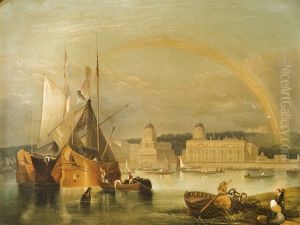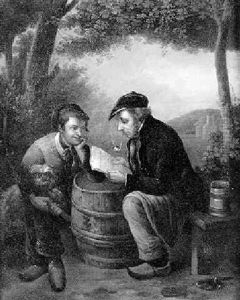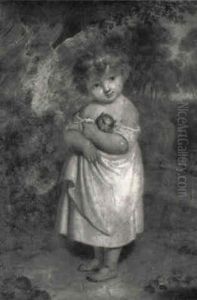Johann Heinrich Stobwasser Paintings
Johann Heinrich Stobwasser was a German craftsman and artist, renowned for his work in lacquerware. Born on November 11, 1740, in Braunschweig, Germany, Stobwasser came from a family with a strong artistic background. He learned the craft of lacquerware from his father, who was also a skilled artist in this medium. Lacquerware involves the application of lacquer to wood and other materials to produce objects with a highly polished, durable, and decorative finish.
Stobwasser's talent and innovation led him to develop a successful business. In 1763, he founded the Stobwasser Factory, which became famous for producing high-quality lacquerware. His work was characterized by the fine painting and the use of chinoiserie and European scenes, often inspired by contemporary prints and engravings. The items produced by his workshop, which included snuffboxes, decorative boxes, trays, and portraits, were sought after by the European aristocracy and bourgeoisie for their exquisite craftsmanship and elegance.
He ran the factory in Braunschweig until 1794 when he handed over the management to his son, Johann Heinrich Ludwig Stobwasser. The Stobwasser Factory continued to operate successfully under his son's direction and maintained its reputation for excellence. The lacquerware produced by the Stobwassers is considered some of the finest of the period and is now highly valuable, with pieces displayed in museums and private collections around the world.
Johann Heinrich Stobwasser died on May 27, 1829, in Braunschweig. His legacy lived on through the continued work of his son and the enduring reputation of the Stobwasser Factory, which remained active until the mid-19th century. Today, Stobwasser's artistry is recognized for its significant contribution to the decorative arts and the craft of lacquerware during the 18th and early 19th centuries.









